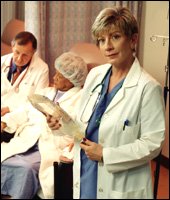| Back to Back Issues Page |
 |
|
Four Cancer Risks That Increase With Age" - Your Health Success ezine September 04, 2018 |
I hope you enjoy the e-zine as much as I do writing it. Index: Optimum Health Tip: Quote of the Day: Health Report: Four Cancer Risks That Increase With Age Recommendations & Sponsors Warren’s Notes Have a Laff! Inspirational Meme: Your ebook download "How to Live to 100" Thank you to my readers who refer other people to my ezine. If they want to subscribe for the next edition, they can just visit the website and subscribe here: SUBSCRIBE to eZine If you ever decide that you want to unsubscribe, you will find the link to do so at the bottom of this page. (But we will really miss you!) Optimum Health Tip:Emotional EatingAre you aware of the differences between emotional hunger and true physical hunger? You may be surprised to know that they are not the same feeling. Emotional eating will come on suddenly and craves specific foods that you find comforting. Physical hunger arrives gradually and there are many options of food that will sound tasteful to you. Emotional eating can also give you feelings of shame or guilt, while true physical hunger will not cause you to feel badly about yourself. It’s important to know the difference. Motivating Quotes:A healthy attitude is contagious but don't wait to catch it from others. Be a carrier. Tom Stoppard If you don't think your anxiety, depression, sadness and stress impact your physical health, think again. All of these emotions trigger chemical reactions in your body, which can lead to inflammation and a weakened immune system. Learn how to cope, sweet friend. There will always be dark days. Kris Carr "I don't have an hourglass figure. I have an hour and a half. I
have a little too much time on my ass."
REPORT: "Four Cancer Risks That Increase With Age"
Cancer can occur in individuals of any age but many cancers are directly related to age and have an increasing incidence as one ages. Here are four cancers you stand a greater chance of getting as you age: Breast Cancer The incidence of breast cancer increases with age. For example, a woman aged 50 has a 2.29 percent chance of getting breast cancer over the next ten years, while a woman 60 years of age has a 3.48 percent chance of getting breast cancer over the next ten years. For women aged 70, they have a 3.88 percent chance of getting breast cancer in the next ten years and a 6.16 percent chance of getting breast cancer over the next 20 years. What is Breast Cancer? Breast cancer happens when cells that do not know how to shut off production of more cells begin to grow out of control in breast tissue. The cells eventually replace normal breast tissue, can travel to the lymph nodes through the lymph system, and can eventually spread throughout the body, including the liver, lungs, and brain. Breast cancer is a common disease, affecting one out of every 8 women in the course of their lifetime. Symptoms of Breast Cancer Breast cancer has no symptoms when it is in its earliest stages. This is why having a regular mammogram is so important. With a mammogram, cancerous cells can be detected using a special kind of breast x-ray that can tell the difference between normal breast tissue and cancerous tissue. Symptoms you might have that indicate breast cancer include the following: • Having a hard like marble beneath the skin of the breast. • Feeling a lump in the breast, especially after menses. • Armpit swelling • Tenderness or pain in the breast • The presence of a red breast that is painful and has an “orange-peel texture” • An indentation of the nipple • An indentation of breast tissue • A change in the size, texture or temperature of the breast • Itching of the breast • Bloody, clear or other color of discharge from the breast Types of Breast cancer Not all breast cancers are of the same type. Breast cancer can be located in different parts of the breast and can have different types of receptors on them, making them more or less sensitive to increased growth under the presence of female hormones. Breast cancer forming in the milk ducts is the most common type of breast cancer. It can stay within the ducts or can break away from the ducts and can become invasive. Lobular cancer of the breast is formed in the part of the breast where the milk is produced. Like ductal breast cancer, it can break out of the lobules and invade the rest of the breast tissue. Connective tissue breast cancer is more rare. It occurs in the part of the breast that is the fatty tissue, blood vessel tissue, or muscle of the breast. These types of breast cancers are called sarcomas. Hormone Receptors and Breast Cancer Breast cancer can be classified according to the type of hormone receptors located on the breast cancer cells. The two main female hormones are estrogen and progesterone. Your breast cancer can be one of three main types. Doctors use these receptor types to tailor the treatment each type of breast cancer gets. The hormone receptor status of a breast cancer can be one of these: • Estrogen receptor positive. This might respond to anti-estrogen therapy. • Progesterone receptor positive. This might respond to anti-progesterone therapy. • Hormone receptor negative. This has no hormone receptors and is the most difficult to treat because it doesn’t slow in growth with medications that block estrogen and progesterone. Prevention of Breast Cancer The best thing you can do to detect cancer at its earliest stages is to have a regular mammogram. The American Cancer Society now recommends annual mammograms starting at the age of 45 years. Women with strong family histories of breast cancer can have their mammogram screening earlier in life. Breast cancer is also strongly affected by obesity. Maintaining one’s weight through exercise and a healthy diet can reduce the risk of breast cancer in many women, regardless of age. Learn more here about Breast Cancer Prostate Cancer Prostate cancer is another type of cancer that increases with age. Men of age 50 have a 2.26 percent chance of getting prostate cancer in the next 10 years, while men of age 60 have a 6.29 percent chance of getting prostate cancer within the next ten years. Of men at age 70, they have a 7.52 percent chance of getting prostate cancer within the next ten years and a 10.3 percent chance of getting prostate cancer within the next years. It is often said that up to 80-90 percent of all men of age 80 or more have some prostate cancer cells within their prostate gland. What is prostate cancer? The prostate gland is part of the male reproductive system. Its function is to make the fluid that makes up male semen in the ejaculate. In most men, the prostate gland is about the size of a walnut. It is located just beneath the bladder and the male urethra passes through it. Prostate cancer is the most common cancer in men who live in the US besides skin cancer. There are two main types: slow growing prostate cancer and more aggressive prostate cancer. Most men have slow growing prostate cancer and do not need much of an aggressive treatment as fast-growing prostate cancer. Prostate gland cancer usually stays within the prostate gland and causes symptoms of urinary dribbling, difficulty getting a strong urinary stream, and pelvic pain. If it spreads, it usually spreads to nearby pelvic structures, although aggressive prostate cancer can metastasize to bone. Causes of Prostate Cancer No one knows the exact cause of prostate cancer but, in some cases, it appears to be hereditary. It also occurs in higher numbers among men who have a greater than average weight and who eat fat from red meat. Charred meat also causes prostate cancer. Prostate cancer has been found to be more common in parts of the world where there is a high consumption of dairy products and meat and a lower consumption of soy products, vegetables, and rice. Hormones also have an effect on breast cancer. Men who eat a lot of fat have increased amounts of testosterone in the body, which enhances the growth of prostate cancer. Men who work in the following industries also have a higher incidence of prostate cancer: • Industries that use cadmium • Rubber-making industries • Battery manufacturing • Welding industries Failure to exercise is linked to getting prostate cancer; however, those who take triglyceride-lowering medications, cholesterol-lowering drugs, finasteride, and aspirin are relatively protected from getting prostate cancer. Prevention of Prostate Cancer You can reduce your risk of developing prostate cancer by eating a diet high in broccoli, cabbage, and cauliflower as well as tomato sauce. Keeping a normal weight through diet and exercise can help prevent prostate cancer. Learn more here about Prostate Cancer
Recommendations & Sponsors:Our Sponsors and Affiliates are what keep this newsletter and our website self help books, articles and resources free to you, so we appreciate your support when purchasing from our sponsors.I have been involved in sports all my life, and in my 50's I started serious weight lifting. My goal is to enter competitions after my 60th birthday and challenge the Australian categories in my age group. As a result I have learned much about this sport and the requirements for building muscle. This book with give you valuable tips to begin your own body building and weight lifting career:
REPORT: "Four Cancer Risks That Increase With Age" continued:Lung CancerThe incidence of lung cancer increases with age. About 2/3rds of people diagnosed with lung cancer of 65 years of age or older. Only about 2 percent of lung cancer is seen in individuals who are younger than 45 years of age. Most statistics place the average age when lung cancer is detected at about 70 years of age. In total, if you are a man, you have a risk of getting lung cancer at a rate of about 1 in 13 men. For women, the risk of getting lung cancer is about 1 in 16 women. What is lung cancer? Lung cancer involves the formation of abnormal cells in the tissue of the lungs. There are several types of lung cancer, including large cell cancer, small cell cancer, and mesothelioma. Each is treated slightly differently, using surgery, radiation therapy, and immunological therapy to rid the body of cancer. Causes of Lung Cancer The vast majority of lung cancer cases are caused by cigarette smoking. Smoking accounts for about 90% of lung cancer deaths. This means that the risk of getting lung cancer in a smoker is 23 times higher in male smokers than in men who do not smoke. Similar statistics exist for women. Other causes of lung cancer include exposure to radon gas, which comes up from the ground and can be found in homes where radon gas is highest in the soil. Exposures to asbestos and air pollution are also risk factors for getting lung cancer. Prevention of Lung Cancer The number one thing you can do to prevent lung cancer is to never start smoking or quit if you do smoke. Reducing your exposure to radon gas (having a radon gas detector in your home) and reducing exposure to asbestos can also decrease the risk of getting lung cancer. Colon Cancer Colon cancer is another form of cancer that has an increased incidence with aging. According to the CDC, a man at the age of 50 has a 0.68 percent chance of getting colon cancer in the next ten years while a man at the age of 60 has a 1.26 percent chance of getting colon cancer in the next ten years. For men of age 70, they have a 1.96 percent chance of getting colon cancer in the next ten years and a 3.46 percent chance of getting colon cancer in the next 20 years. What is colon cancer? Colon cancer generally arises from pre-malignant polyps that form inside the colon. Polyps are growths that come out of the inner lining of the colon and grow very slowly. At some point, the cells of the polyp become cancerous, leading to cancer of the colon. Causes of Colon Cancer Prevention of Colon Cancer Colon cancer can partly be prevented by maintaining a normal weight through exercise and eating a low calorie diet. Colon cancer is also largely prevented through colon cancer screening. Screening for colon cancer involves having a colonoscopy starting at the age of 50 (earlier if you are high risk).
Just enter WT (in capitals)to open the page.

News!
For all the subscribers that don't want to talk to anyone, just want to buy their products direct, I'm creating these websites that process orders for you once you register with them. |
| Back to Back Issues Page |





 Hi,
Hi, 


